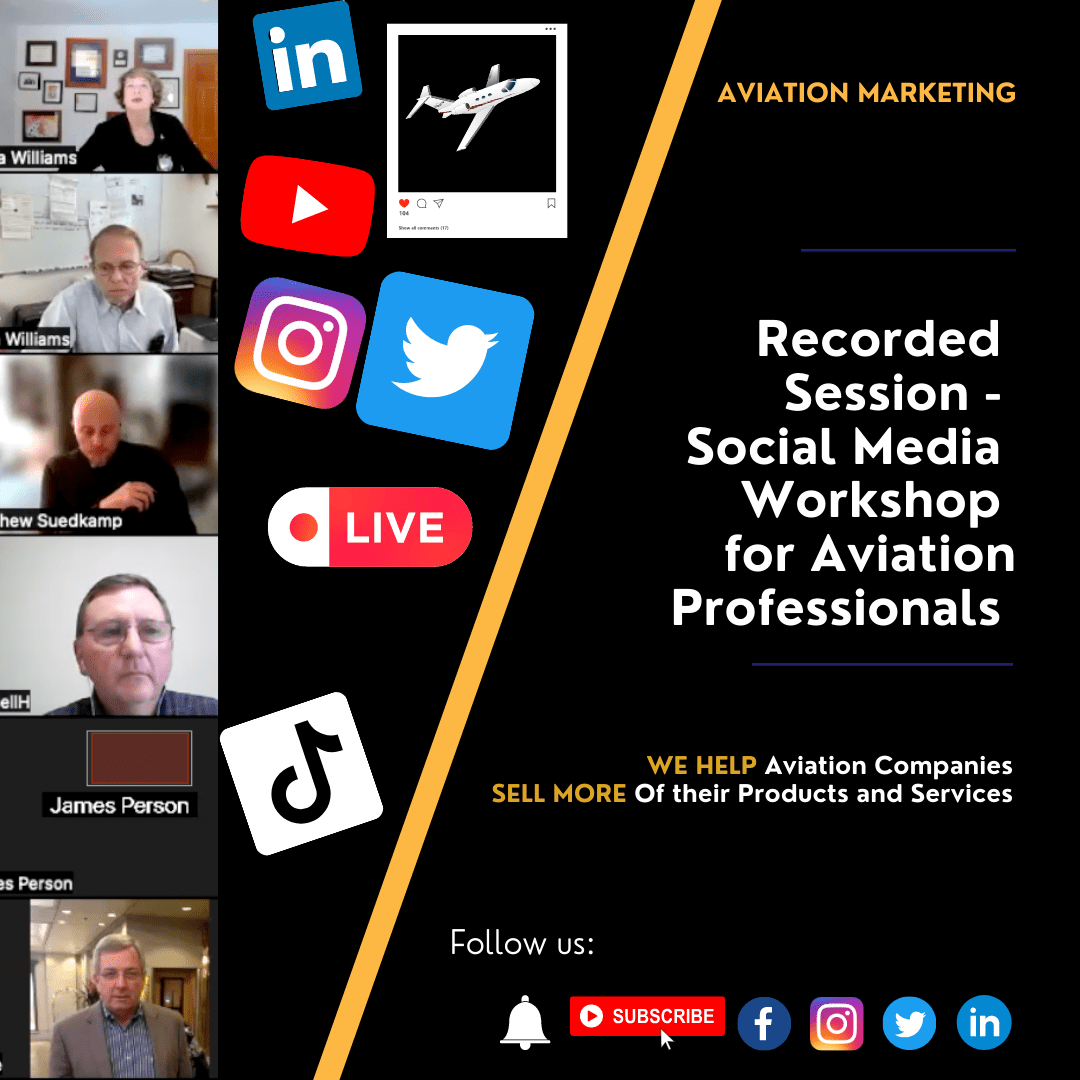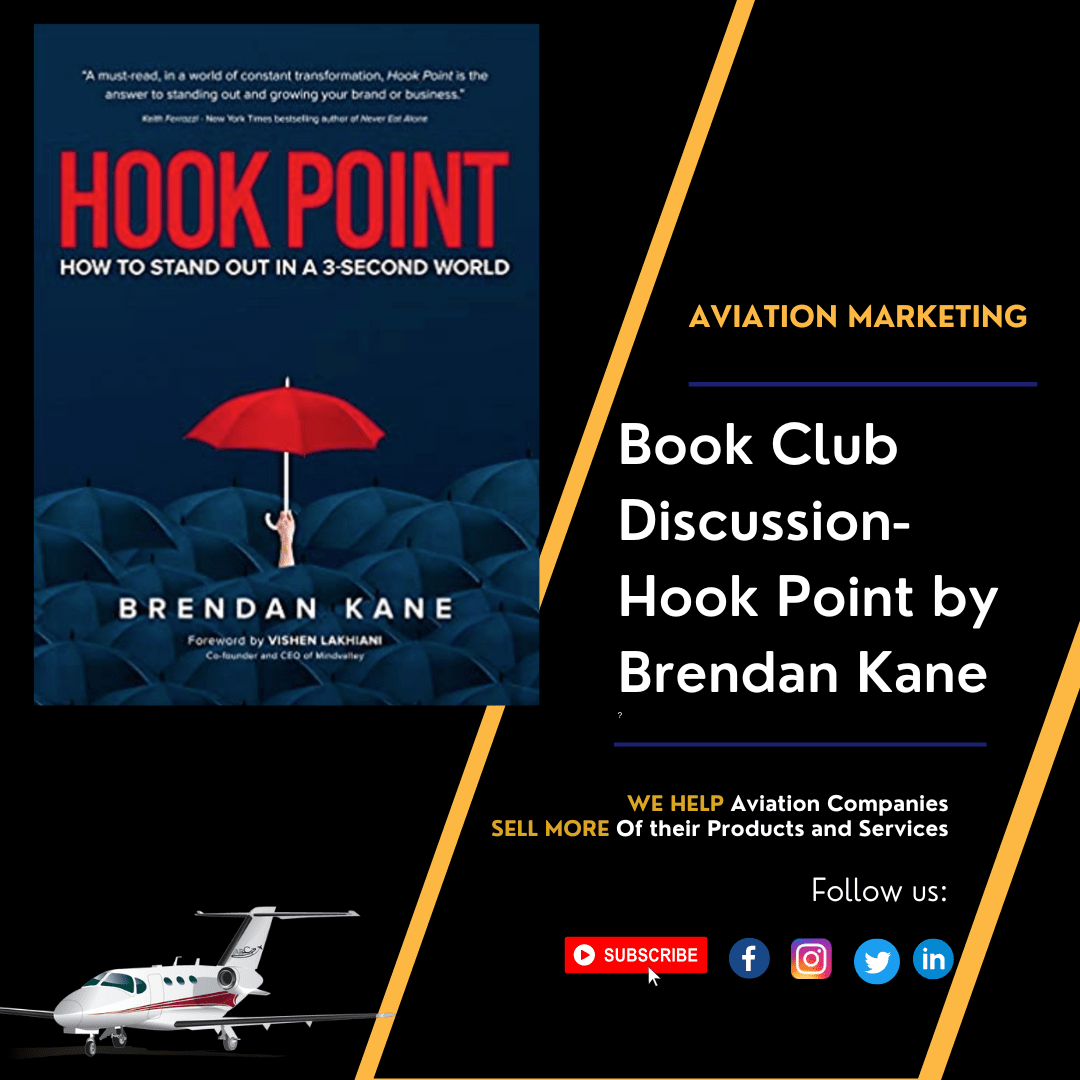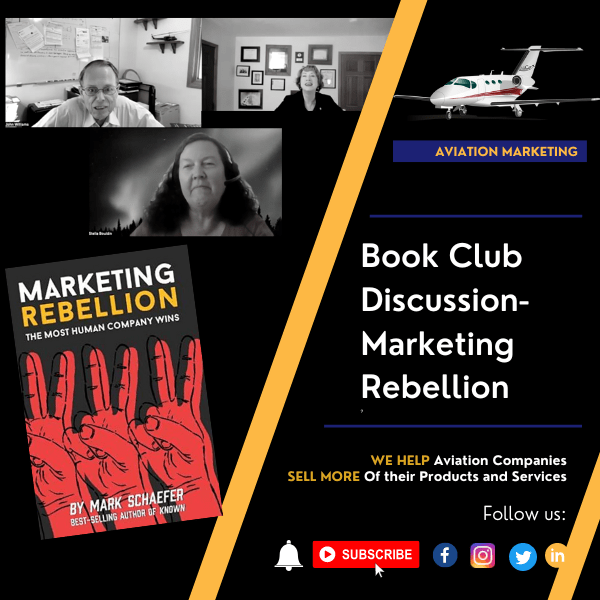What has changed in FBO Marketing plans?
Three big factors, and several small ones!
1) FBOs are seeing more first-time flyers than ever before.
2) There is a need to be a better neighbor in our airport communities
3) We have a talent shortage – it’s hard to get the great people you need to provide the kind of service your customers expect.
John and I discuss these issues, plus “hangar inflation,” SAF fuels, effective marketing campaigns, the increasing difficulty of getting found on online search engines, and customer service expectation inflation 😉 ✈️ 💕
And offer some solutions as well, of course!
Transcript – What’s New in FBO Marketing Plans
Paula Williams: Welcome to this week’s episode.
John Williams: Yeah. One more time. We keep trying to get things adjusted.
Paula: I’m Paula Williams.
John: I’m John Williams
Paula: We are ABCI and ABCI’s mission is.
John: To help all you folks out there in the aviation world sell more of your products and services.
Paula: Absolutely. So we have done a number of videos for FBO marketing and a lot of videos that weren’t maybe specifically for FBO marketing, but that people use for FBO marketing, right. But there have been a lot of things that have changed over the last couple of years, especially having to do with FBOs airports and so on.
John: Oh, you think?
Paula: Yeah.
John: Especially last year.
Paula: Exactly. So I thought we should do an update.
John: Of course.
Paula: Of course. Just to talk about some of the current events, some of the things that have been going on, some of the things that people are asking us, and so on.
John: Okay.
Paula: Ready?
John: No.
Paula: Okay. Let’s do it anyway. Okay. So I kind of picked three big topics. One of them is that we’re having a lot more first-time flyers on the private side of the airport that have never been there before, and don’t know what they’re doing, right.
John: That appears to be true.
Paula: We have a bigger need to be a good neighbor as an airport than ever before, because there’s a little bit of push back.
John: From whom?
Paula: We’ll talk about that in a minute. John, jumps immediately to the defense of the airports, right. And then the third thing is the talent shortage or whatever you want to call it which is causing most FBOs as well as other businesses to have a hard time finding high quality, very cool people that are going to make the difference in their service, right?
John: That’d be true.
Paula: Okay. So the first one, there are more first-time flyers than ever before on the private side of the airport, a lot of people who have always flown airlines and have never considered flying charter or private, or maybe even are buying their own airplane or learning to fly or other things like that, for a lot of reasons, right.
John: Yeah. Not the least of which is airline prices are going up again right now.
Paula: I know. They were so low for the longest time which was great, and of course the airlines are coming back in a big way, which is also good. But from our business aviation side of the house, we’re also seeing a lot of demand for people in charter and other things. These are people who have a lot of questions, right.
Either about aircraft management, about chartering an aircraft, about everything really. Can I fly internationally? What do I have to do? Can I take my dog?
John: I’ve heard I could fly on empty leg. What does that mean? And how do I do it?
Paula: What is an empty leg? Lots of things like that. The charter companies that we’re finding are the most successful nowadays are the ones that can kind of cater to that naivete, if you want to say it that way. People who are not, who want to feel comfortable and they don’t want to feel awkward walking into an FBO. They want to feel like they know what they’re doing. They don’t even know what questions to ask, to be honest the first time around they’re doing private aviation. We can certainly understand that and maybe put ourselves in their shoes, create an FAQ or something like that on your website about those things so that they can read about them in the privacy of their own home and not embarrass themselves by calling you up and asking you a bunch of questions when they don’t want to feel stupid, right.
John: Right.
Paula: Nobody ever wants to feel stupid, especially people who are in the market for private aviation services. Yeah, so these are business people, these are very savvy, intelligent folks. They’re just new at something and it really sucks to be new at something. So you want to show a little bit of compassion and throw some videos or some FAQ’s or some other information their way. Maybe when they inquire about a charter flight, then send them an email that has, here are some of the questions that people ask the first time they fly charter. They can read it if they want to, but if they’re already experienced flyers, they don’t have to.
John: Okay.
Paula: But it just gives them the option and makes them feel a whole lot more comfortable and makes your charter company, the one that they will choose because you’re the one that made them feel comfortable and made them feel at home and made them not feel like a newbie, right. Okay.
Okay. So that’s thing number one, more first-time flyers. The second thing the need to be a good neighbor. And this actually we’ve put on the list because we were asked a lot of, well, we’ve been asked a lot of questions, but we were asked to actually give a presentation to the NATA members. This was an online thing, a Zoom thing. And we invited our client Doug Goldstrohm, and also Lara Kaufman from the GMU airport about this, because there is so much interest in, as an airport how do we be a good neighbor? How do we become a good member of the community? How do we stay out of trouble? How do we make people in the community vote for what’s good for the airport? How do we not get all of the noise complaints and everything else?
John: It’s interesting that we have to go through this fiasco because, by and large, airports were there first.
Paula: Of course they were.
John: They were out in the middle of nowhere and then people started encroaching up to the boundaries and now they’re complaining about the noise.
Paula: Exactly. Well. And the same thing is happening, to be honest, about manufacturing and agriculture and everything else. Where there is such a housing boom that all of the houses are encroaching on everything including airports. You have voting people in the public who live right next to an airport and are upset about the noise.
One of the things that we talked about in that workshop was how to make people feel like it’s their airport. The biggest way is with kids, getting your kids involved in the airport, getting involved with the schools, having the field trips, having the parks, having the airport restaurants that are accessible to people, making people feel like they’re at home in the airport. Because if the only time they ever hear about the airport, is when their taxes are going up, or noise complaints, or a crash, which is really the only time the airports are ever in the news nowadays, of course they’re going to not be really friendly and warm and fuzzy about the airport, right.
John: When I grew up, I’m going to date myself here, but, I was an airport bum. I mean I could go out to any airport, wander around the airplanes talk to people, guys in hangers, guys working on engines, radios and everybody was happy to talk to me.
Paula: Right.
John: Now you can’t get past the fence to get into the restaurant.
Paula: Exactly. There’s a lot of things that have changed with the airports. They used to be really the center of the community. That was where everything was happening. You had reporters who were assigned to the beat, they had actually beats, the reporters where they would go find out what was going on at the airport and that was their job. Nowadays you don’t have that. All you have are people calling the newspaper to complain about something and then the newspaper decides to send somebody down and take pictures.
John: It’s interesting to try to get kids to the airport.
Paula: Right, and that’s a good thing for lots of reasons because you get kids interested in careers as techs, careers as ramp personnel, careers developing aviation products and services. Lots of different reasons that you want to get kids involved in aviation just because that’s really the future. It also really ties you into the community and makes you, makes all of those parents especially, think about their kids third grade field trip as much as they’re thinking about the noise complaints that they’re hearing about.
John: Yeah.
Paula: So it’s just getting the other side of the story told. Also getting involved with the Chamber of Commerce and talking about the different things that you’re doing in your community. There are a lot of people that are delivering industrial parts and delivering agricultural supplies, other things that are much closer than general aviation can get them, or than trains planes or trains or trains, I guess, I did planes, trains or other things can get cargo. All of those things are good, and all of those things really help. In fact, that NATA presentation was so well received that they are wanting us to speak at the Ohio Aviation Association in August. So that’s coming up, and you get to hear the whole thing again, if you missed it, from the NATA perspective, right.
John: Exactly.
Paula: Okay. The third thing, being the talent shortage. You can argue, and we do, all the time, whether this has to do with any number of different things, demographic things, it could be partly what we just talked about that people have no idea that there are jobs at the airport because they don’t go to the airport because they can’t. So, there’s a lot of things going on and there’s a lot of things that companies can do to attract people. One of them is social media. If you have a great presence on social media and you have a pretty good audience in your area, and you’ve got those connections where the Chamber of Commerce, and the local airport is retweeting your stuff, then when you have an opening or something along those lines, you can, number one, not only extend your reach, to people in the community and number two, you can look more attractive because people kind of know what’s going on at your facility, if you’ve been doing these behind-the-scenes videos and you’ve been doing some fun things to show, these are what our people do, this is the background of some of the folks that work here, other things like that.
People will feel like, okay, this sounds like a really cool place to work. That’s a whole lot more comfortable than walking into an interview someplace that the only thing you know, is the of the company and what you’ve seen on their, very corporate website, right.
John: Yeah.
Paula: Yeah, so, especially with young folks, they really want to have more of an idea of what’s going on before they apply for a job. If they have a choice between two opportunities, they’re going to pick the one that looks like the most fun, all other things being equal, right. I do or I would, if I were looking for a job.
John: But all things are never equal.
Paula: All things are never equal, but, that gives you an advantage that you may not otherwise have and it’s super easy to make that happen just by being a little bit more open a little bit more transparent, putting some stuff out there and letting people know what you do. It’s good for marketing also.
Right. Okay. Couple of other things that are in the news that are not really these top three, but they are factors, right. Airplanes are getting bigger so there’s a lot of FBOs and other things that don’t have hangers that are big enough for some of the things that are out there. There is a little bit of demand for new hangers or higher hangar doors and things like that AIN was talking about that. In the US and especially in Asia, there’s a lot of demand for more hangar space that is bigger.
Right, there’s a lot of talk about SAF which is the fuel environmental, more environmentally friendly fuel than what they have now. A lot of folks are saying, “That’s really been sidelined by COVID.” That’s such a second, or third, or fourth or fifth fiddle, that it’s hard to say where that fits in the landscape.
John: True.
Paula: Yeah, and what it comes down to or what all of the surveys and what everybody is talking about, AIN, aviation pros, all of the media that still talk about aviation anyway, the underlying standard, for rating and FBOs performance is how well it treats its customers.
John: Oh, you think?
Paula: Yeah, which comes down to service.
John: Yeah.
Paula: So, I mean you may or may not have the ability to, expand your hangers. You may or may not have the ability to offer SAF. You may or may not have the ability to do all these other things, but if you can provide better service…
John: That’s not just to the paying customers that’s somebody just wanders in looking around…
Paula: Yeah.
John: …as well.
Paula: It’s equal to all, right. Nowadays, it’s impossible to tell the millionaires from the other folks. Right. Okay. A lot of what we talked about today involves better service. So, being more accommodating of first-time flyers, not looking down your nose at people who don’t know what they’re doing or which way is the bathroom, those kinds of things, just being open to people who are not expert flyers and those kinds of things.
John: Or experienced flyers.
Paula: That’s true.
John: Maybe you’d better term them expert.
Paula: Right, and being a good neighbor, some of the things that we talked about and being open, showing some behind-the-scenes video and other things. All of that really comes down to customer service because the more people know about your company and your people, the more sympathetic they tend to be of where you’re coming from and and how to get what they want from you, right.
John: Yeah.
Paula: Okay. Cool. Anything else about FBOs?
John: Tons but not right now.
Paula: Okay. That’s enough for today.
John: Yeah.
Paula: Talk to you soon.
John: See you later.
[END]
More on FBO Marketing
Podcast: Play in new window | Download
Subscribe: Google Podcasts | Spotify | Amazon Music | RSS



























Leave A Comment